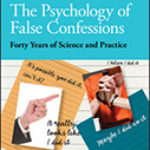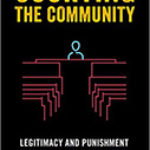Does Torture Work?

Author: John W. Schiemann
Publisher: Oxford, UK; New York: Oxford University Press, 2016. 316p.
Reviewer: Monica Solinas-Saunders | March 2020
Following the attack of September 11, 2001, the CIA established a number of secret prisons, known as “black-sites,” to interrogate detainees categorized as “high-level al-Qaeda suspects.” These black-sites were scattered around the world in secret locations, perhaps to avoid the scrutiny of human rights organizations.
In 2004, pictures of abuses against detainees of the United States military in the Abu Ghraib prison (Iraq) were leaked to the press while the country fought a controversial “War on Terror.” The public outrage caused by the evidence that the United States military engaged in abusive practices led to the appointment of an Independent Committee of the United States Senate Select Committee on Intelligence to conduct an investigation into the CIA operations.
A report made available to the public in 2014 summarizes the main findings of that Committee. The CIA used so-called enhanced interrogation techniques to obtain information on the September 11 attack and on future threats to the security of Americans; some of these techniques were used without the required approvals, and violated the ethical standards of both the CIA and the United States military.
Two main questions pertinent to the controversy over the use of enhanced interrogation techniques are addressed in the book Does Torture Work? by John W. Schiemann:
1. Do enhanced interrogation techniques – as employed by the CIA during the “War on Terror” – constitute torture?
2. Were enhanced interrogation techniques effective in obtaining relevant information from detainees?
Schiemann’s masterful work offers a thorough investigation of the use of enhanced interrogation techniques and employs an array of scholarly perspectives to provide the reader with evidence that is realistic. To address the first question, “Do enhanced interrogation techniques constitute torture?” the author first provides an overview of the enhanced interrogation techniques that were actually used on the detainees.
The techniques were designed by psychologist James Mitchell, a veteran of the United States Air Force, who received a contract from the CIA in 2002. The enhanced interrogation program included attention grasp, walling (described as pushing or slamming a detainee against a flexible wall with the neck wrapped to prevent whiplash), facial hold, facial slap, cramped confinement, wall standing (described as leaning against a wall supported only by the fingers for lengthy periods), stress positions, sleep deprivation, confinement in a box (possibly with a feared insect), waterboarding, reduced caloric intake, use of loud music and white noise, rectal feeding, and diapering.
Schiemann applies a historical comparative analysis to help the reader consider the extent to which enhanced interrogation techniques did or did not constitute torture. These same practices, Thiemann reveals, have been used throughout history. As a society, we in the U.S. have previously discussed such past abuses as being torture. Nevertheless, many are still unable (or unwilling) to recognize that these same practices were employed by the CIA during the War on Terror. Does this mean the term “torture” is too harsh for our collective consciousness? Have we de facto cleaned up the term to convince ourselves that the enhanced interrogation techniques that Mitchell designed and the CIA implemented were not as bad as the torture inflicted by other societies in the past?
Schiemann’s question of whether the enhanced interrogation techniques can be defined as torture is answered with a resounding “Yes!” The techniques were indeed practices that employed torture to extract information from detainees. These same practices had been used during the Inquisition and during more recent military regimes (such as the Pinochet regime in Chile) and are categorized in history books and encyclopedias as being forms of “torture.” If these same practices constituted torture then, it seems more than appropriate to define them as also being torture today.
Schiemann explains that when it comes to the public perception of torture there are in general three groups of perceivers: those who believe that torture is justified whether or not it is effective (Kantians); those who believe torture is justified because of vengeance (Khanians); and, those who think torture is generally effective, but when and if it is not, then it should not be used (Pragmatists). It is on the latter group that Schiemann focuses.
According to the author, the Bush era interrogational model approximates the pragmatic model in that it puts certain limitations on the use of torture. In the pragmatic model, torture can only be authorized if innocent lives face an immediate danger; there are no other options but to use torture; there is a high probability that the person tortured has specific information that would save lives; the techniques used — their severity, frequency, and duration must be the minimum necessary; the techniques used must be approved ahead of time, and must be conducted by specialized trained officers. But because of the way this particular interrogation model was implemented, it failed to provide the consistent results for which the pragmatic model was intended. The enhanced interrogation techniques authorized by the Bush administration were not implemented according to the guidelines. In some instance, torture was used against detainees without the proper approval of the CIA headquarters. Furthermore, the model failed to consider the possibility that torture might be inflicted on innocent detainees.
To address the second question, of whether the enhanced interrogation techniques implemented by the CIA were effective, Schiemann develops a detailed analysis through the use of game theory. He distinguishes the Bush administration approach as being different from one that takes into consideration all the possible outcomes. In a torture game theory model, the players in the “game” are the interrogator and the detainee. There are three different types of detainees: the cooperative detainee, the resistant detainee, and the innocent detainee. The case of the innocent detainee was not considered in the CIA interrogational model. In addition, this model failed to consider that it is impossible to know how much information the detainee has or is withholding.
When it comes to information elicited, it is unclear who can decide whether the information provided during an interrogation is clear, unambiguous, or unsatisfactory. This might depend on both the type of interrogator and the type of questioning used during the interrogation. According to Schiemann’s analysis, there are two types of interrogators: sadistic and the pragmatic.
In the context of the CIA approach, the idea of game theory is that two players, the interrogator and the detainee, have different options. Any possible scenario in game theory is based on the idea of equilibrium (or Nash equilibrium), a situation that is optimal for each player conditional upon the choice of the other player. An equilibrium implies that players would not use a different strategy, considering the choice of their opponent, because their payoff would diminish. Of course, in the case of torture, there is no actual Nash equilibrium because torture is not optimal for either party. Schiemann suggests three steps to find equilibria in the “games” involving detainees and interrogators: (1) Consider a set of possible strategies for each type of detainee (cooperative, resistant, innocent); (2) Consider the possible responses for each type of interrogator (sadistic or pragmatic) based on the detainee’s reactions (that is, give information or stay silent); and (3) Assess whether the detainee would change strategy based on the interrogator’s anticipated responses.
Detainees’ information is the most problematic element to assess. A possible scenario, Schiemann explains, is one where the detainee has information that is relevant to the interrogator; the detainee is subjected to objective questioning and provides some relevant information; the interrogator, however, does not believe the information is valuable and the detainee is subjected to torture. Another possible scenario focuses on the use of leading questioning. In that case, the detainee provides some information, but the interrogator may deem the information to be ambiguous, and the detainee is subjected to torture again.
Schiemann focuses on a realistic interrogational torture model that captures the complexity of the situation where a vast number of variables are included to articulate the games and their possible outcomes. These games focus on the incentives that both the detainee and the interrogator face. The realistic interrogational torture model actually provides evidence that torture leads to misleading information.
While reconstructing all the possible scenarios through game theory, the author compares these kinds of games to case studies from the real world, to point out that torture – as it occurs in the real world – does not work. Torture tends to produce false information, ambiguous information, misleading information, or no information at all. In an ideal case scenario, when all the conditions are satisfied and – if and only if – we are willing to also torture innocent detainees, torture might work. As Schiemann points out, we would end up using a lot of torture for a little bit of information. The CIA used a lot of torture that generated very little valuable information. On the other hand, much of the information on the September 11 attack was already available prior to the employment of the enhanced interrogational model.
Schiemann’s concluding argument is that torture does not work. He comes to this conclusion not just using his own moral judgement, but through a careful analysis that uses both a comparative historical perspective and a game theory framework to articulate complex scenarios.
Everyone should read Does Torture Work? to realize that exploring the effectiveness of torture through the use of real quantitative data is not possible. Those data do not exist. Game theory, however, provides a useful tool to reconstruct complex scenarios that can be compared to the real cases highlighted in history books. Beyond the application of complex game theoretical models, Schiemann teaches us to be skeptical and to carefully analyze evidence that is fed to us by institutions, media, and politics. This is a message that we ought to include in all our scholarship and our educational curricula.
Monica Solinas-Saunders, Ph.D., SPEA, Associate Professor,Indiana University – Northwest campus


